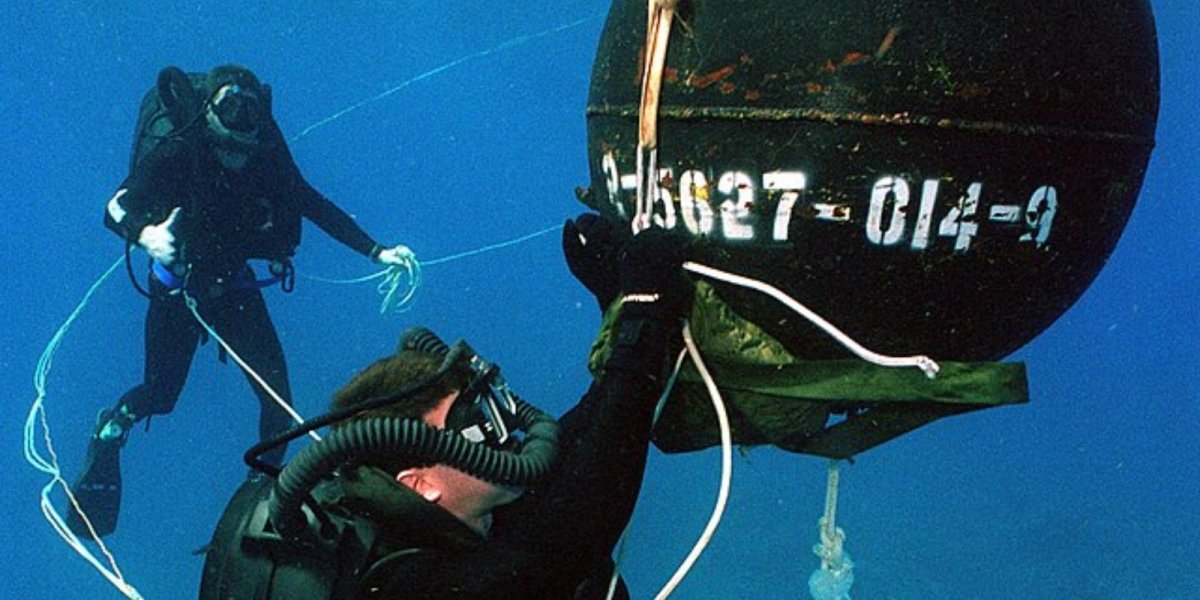NAVY INNOVATES SEA MINE DETECTION FOR SAFER MARITIME OPERATIONS

What lurks below the ocean's surface has fascinated man virtually for as long as we’ve been around. While many throughout history have been concerned with various creatures and legends of the deep, in the modern world, another real threat lies below—sea mines. Although they’re not a new concept, how we detect and dispose of naval mines continues to evolve. Now, the U.S. Navy is improving its methods, and as a result, sea travel conditions for all.
Sea Mines: Mechanisms and Threats Explained
Sea mines are a simple concept based on a much more complicated science. These underwater explosive ordinances detonate when triggered by passing ships in the hopes of taking out enemies before they ever reach their destination.
Some mines use contact while others use magnetic detection or pressure changes, but once triggered, enemy ships are incapacitated, making them effective in blocking shipping routes, protecting harbors, and more.
For hundreds of years, sea mines have been used, with most modern designs relying on sensors to detect ships. Once an enemy is detected, an internal detonation system creates a powerful underwater explosion.
This blast generates a shockwave and gas bubble, which can severely damage or sink vessels, and while these weapons can be set out as a trap, technology is allowing for much better, diverse applications.
Mines can be deployed from ships, submarines, or aircraft and positioned in various ways—anchored to the seabed, moored at specific depths, or left to drift.
From Medieval China to Modern Applications
Putting mines in the sea has a long and fascinating history, dating back to 14th-century China, when military experts designed floating explosives to defend against enemy ships.
By the 16th century, Chinese naval mines were deployed against Japanese pirates, and by the 17th century, they even had remote-detonated versions.
In the West, early sea mine designs were popping up by the late 1500s, but it wasn’t until the American Revolution that mines were successfully used in combat.
Over the next several centuries, the evolution of technology brought forth even more innovation for naval mines, which would see the weapons move from merely a defensive option to becoming a key weapon in warfare.
From the Crimean War to World Wars I and II, mines were used to protect coastlines, sink enemy ships, and even cut off supply routes.
By World War II, mines had become highly sophisticated, with magnetic and pressure-sensitive triggers that could sink ships without direct contact.
Their strategic importance has only grown, and even today, naval mines remain a crucial tool in maritime defense. However, their effectiveness and increase in use are also leading to concerns for civilian ships and infrastructure.
Civilian Vessels at Risk
While the use of a sea mine may benefit naval defenses, there’s a lot of other traffic out there.
Oceans, seas, and various bodies of water around the world are home to fishermen, cruise ships, yachts, supply boats, research vessels, etc., that may not be engaging in warfare but could become victims, nonetheless.
Their presence can disrupt trade by forcing ships to reroute while their stealthy nature makes them difficult to detect.
To reduce harm to neutral vessels, international law requires nations to declare mined areas, but the risk remains a major concern for maritime safety.
Navy's Maritime Expeditionary Response Crawler: Sea Mine Disruption
The U.S. Navy is developing a robotic crawler known as the Maritime Expeditionary Response Crawler to help detect and neutralize the threat of sea mines.
Operating at depths of nearly 2,000 feet, using sensors and manipulator arms, the unmanned crawler crew would find and disable mines autonomously while keeping human operators at a safe distance.
While the Navy already has drones for this purpose, the seas are diverse, and you’re going to need to get creative when navigating different seabed conditions, which the Maritime Expeditionary Response Crawler will do.
Furthermore, the Navy’s new toy will remain stable in ocean currents and even transit on the surface before diving.
Protecting ships is important and a focal point of the project, but it’s also important to safeguard underwater infrastructure. This includes undersea cables and pipelines we rely on for things like oil production and the Internet.
With growing global threats, this technology aims to make underwater operations safer and more effective.
Sea mines may remain an active threat, but the military is pushing to make the open waters a bit less threatening through this innovative drone.
Suggested reads:
Buddy Blouin
Buddy Blouin is a Contributing Writer at VeteranLife.com
Buddy Blouin is a Contributing Writer at VeteranLife.com
SHARE:



